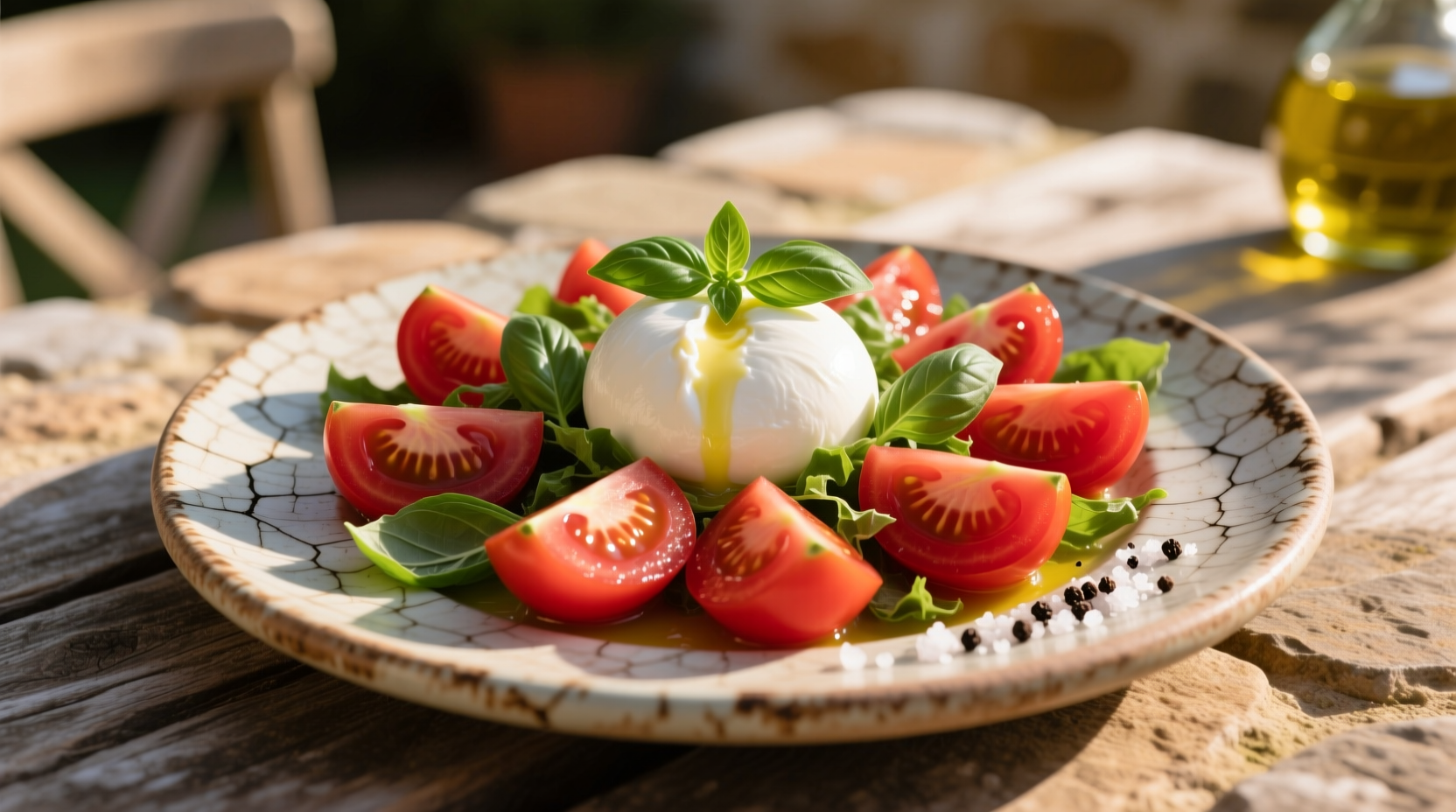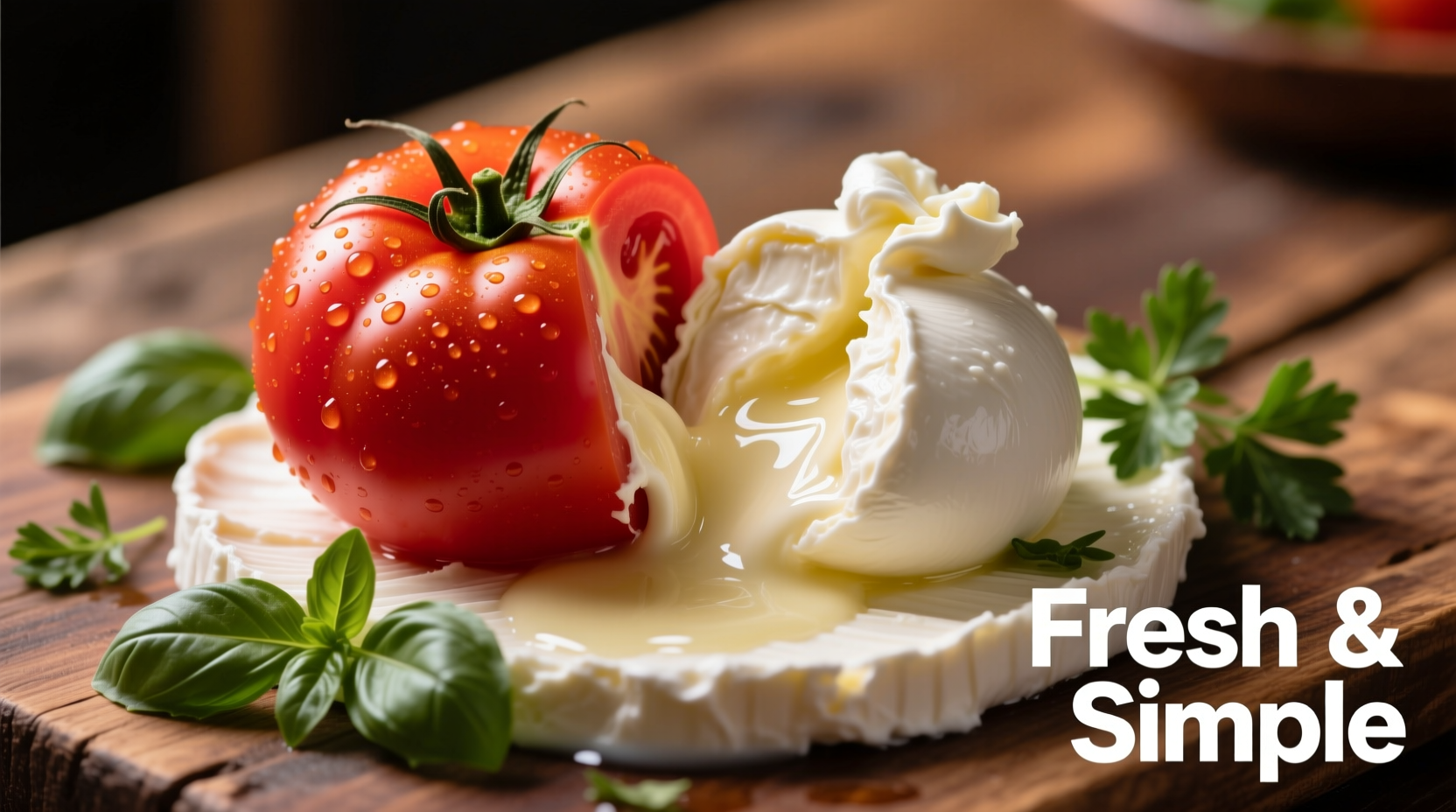Why Tomato and Burrata Form Culinary Magic
Tomato and burrata represent one of Mediterranean cuisine's most celebrated duos for scientifically backed reasons. The natural acidity of ripe tomatoes cuts through burrata's luxurious creaminess, while the cheese's subtle tang enhances the fruit's natural sweetness. Food scientists at the Culinary Institute of America confirm that this pairing activates multiple taste receptors simultaneously, creating what they call "flavor layering"—where neither ingredient overpowers the other but instead creates a more complex sensory experience than either provides alone.
Unlike many cheese-and-fruit combinations, tomato and burrata work exceptionally well because of their shared regional heritage. Originating in Italy's Puglia region, burrata was traditionally created as a way to utilize leftover mozzarella scraps, then filled with fresh cream and stracciatella. When paired with locally grown San Marzano tomatoes, this combination became a staple of Southern Italian summer tables.
| Tomato Variety | Best For | Peak Season | Flavor Profile |
|---|---|---|---|
| San Marzano | Cooked applications | August-October | Sweet with low acidity |
| Brandywine | Raw preparations | July-September | Complex, fruity, balanced |
| Cherry | Salads, quick dishes | June-October | Concentrated sweetness |
| Roma | General purpose | July-November | Firm texture, moderate acidity |
Selecting Ingredients for Success
Not all tomatoes and burrata are created equal. The quality of your final dish depends entirely on ingredient selection. For tomatoes, seek out vine-ripened varieties that yield slightly when gently squeezed. Avoid refrigeration, which destroys flavor compounds—store at room temperature until ready to use.
When selecting burrata, look for the production date—ideally within 24-48 hours. Authentic burrata should feel heavy for its size with a delicate outer shell that gives way to creamy stracciatella and fresh cream inside. As noted by Slow Food Foundation's Presidia project, genuine Puglian burrata uses only local cow's milk and traditional production methods that preserve the cheese's distinctive texture.

Preparation Techniques That Make the Difference
The simplicity of tomato and burrata means technique matters more than complexity. Follow these professional chef methods for optimal results:
- Tomato preparation: Slice tomatoes 30 minutes before serving to allow flavors to develop. Season immediately with flaky sea salt to draw out juices that create a natural dressing
- Burrata handling: Tear rather than cut burrata to preserve its delicate structure. Place on tomatoes just before serving to prevent sogginess
- Timing: Assemble no more than 5 minutes before serving—any longer and the salt will break down the cheese's structure
Classic Preparation and Creative Variations
The traditional preparation requires only four ingredients: ripe tomatoes, fresh burrata, high-quality olive oil, and flaky sea salt. But understanding context boundaries helps you adapt this dish successfully:
When this pairing works best: During peak tomato season (summer through early fall) with locally grown, vine-ripened tomatoes. The combination shines when tomatoes have natural sweetness and acidity.
When to reconsider: With winter greenhouse tomatoes that lack flavor complexity, or when using burrata past its prime (more than 3 days old). In these cases, consider roasting tomatoes to concentrate flavors or substituting with fresh mozzarella.
For creative variations that maintain the dish's integrity:
- Add fresh basil leaves torn by hand (never cut with metal, which causes browning)
- Include a drizzle of aged balsamic reduction for depth
- Scatter toasted pine nuts for textural contrast
- For a modern twist, add a few drops of lemon zest oil
Serving Wisdom from Italian Tables
Italians serve tomato and burrata as a first course (primo piatto), never as a side dish. The traditional presentation features tomatoes arranged in overlapping slices with burrata placed in the center, allowing the creamy interior to flow naturally when cut. Serve on room-temperature plates—never chilled—as cold surfaces dull flavors.
Pair with a crisp white wine like Vermentino or a light-bodied red such as Negroamaro served slightly chilled. Avoid heavy dressings that mask the ingredients' natural qualities—extra virgin olive oil should be the only liquid addition.











 浙公网安备
33010002000092号
浙公网安备
33010002000092号 浙B2-20120091-4
浙B2-20120091-4